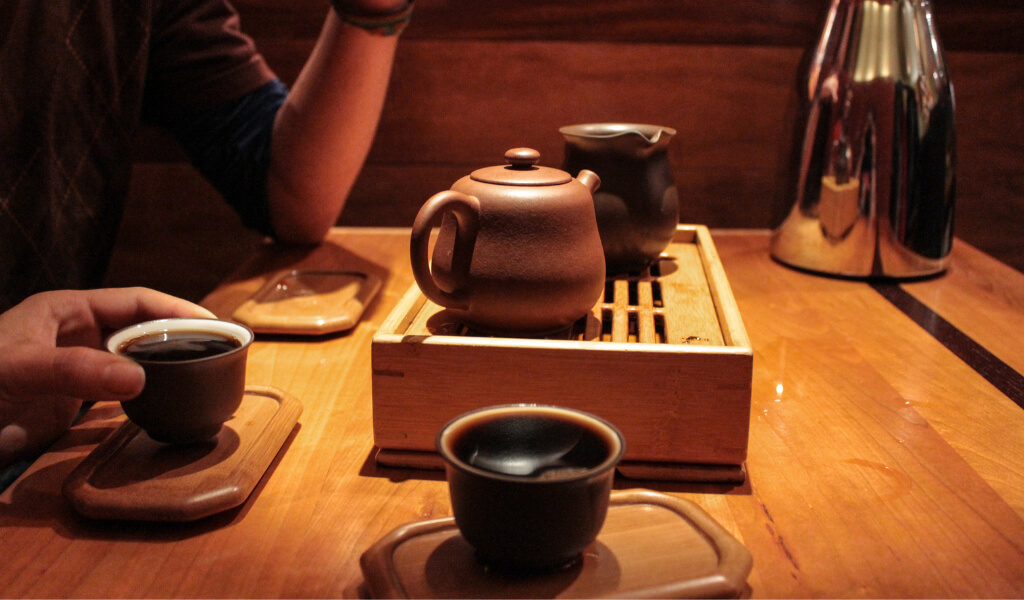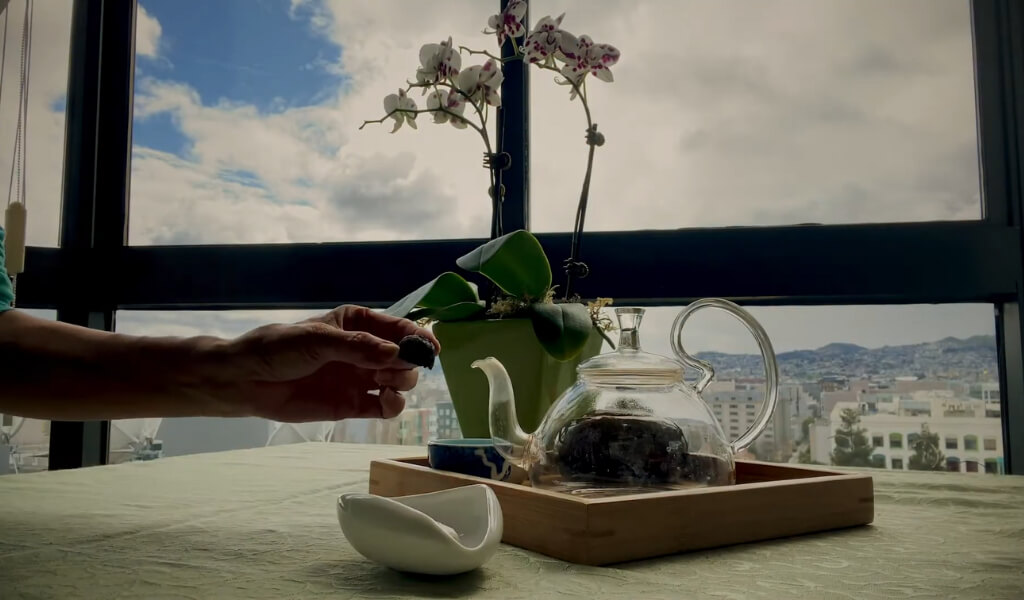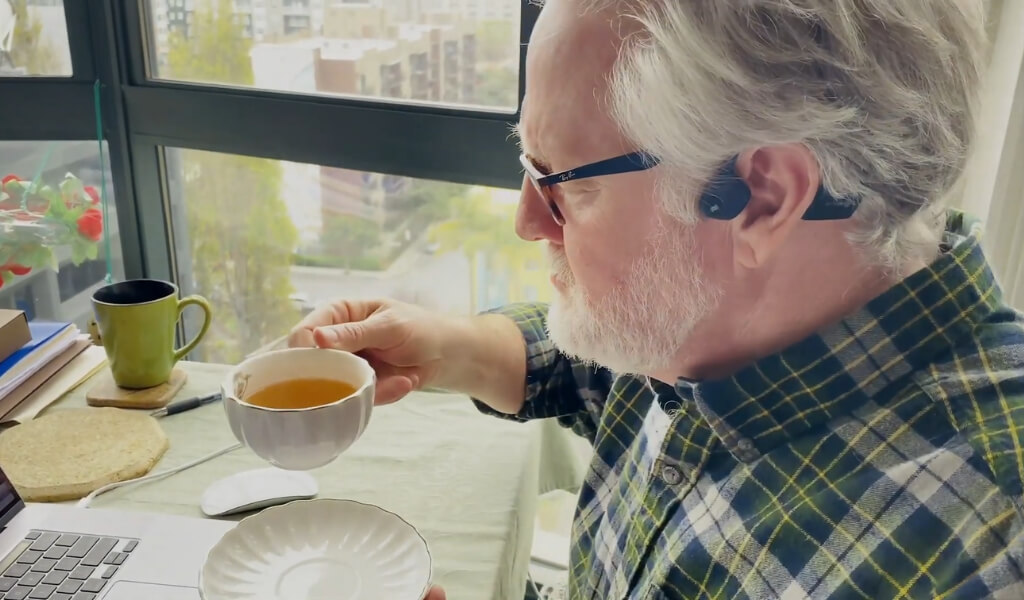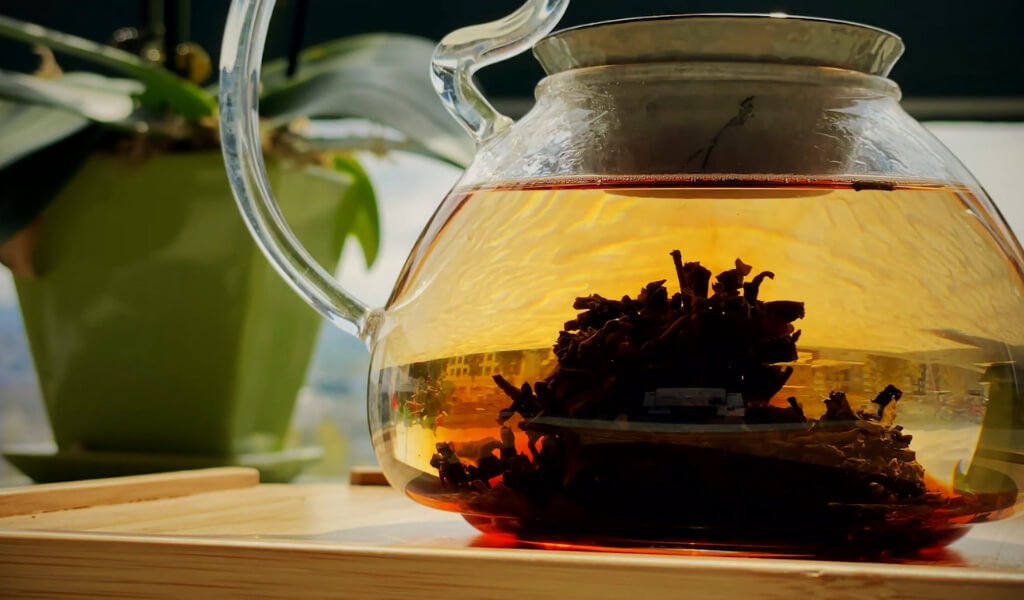Welcome to a sensory adventure like no other – the realm of Pu-erh tea taste. Pu-erh tea has intrigued tea enthusiasts for centuries because of its rich history and distinctive flavor profile. In this article, we embark on a journey to uncover the secrets behind the taste of Pu-erh tea, exploring its nuances, complexities, and the extraordinary sensations it imparts to those who savor it.
Quotes of tea at Today
“All types or pu-erh can be stored for maturity before consumption and that is why it has become common for the products to be labelled with year and region of production.“
What does pu erh tea taste like?
Tea lovers love Pu-erh tea for offering a complex and intriguing flavour profile. Although it may take some getting used to, fans of pu-erh tea appreciate its rich and rustic flavour, which sets it apart from other teas.
| Aspect | Description |
| Rich |
Pu-erh tea develops deep black color, offers full-bodied, rich flavor; favored by coffee-to-tea switch.
|
| Smooth and Mellow |
After proper storage and brewing, Pu-erh loses tannic taste and acidity; becomes smooth and gentle.
|
| Earthy |
High-quality Pu-erh offers bold, robust earthy flavor from aging; cherished by devoted fans.
|
| Smoky |
Pu-erh can have a subtle smoky flavor due to traditional drying methods; preference varies.
|
| Mushroom-y |
Pu-erh’s partial fermentation introduces a gentle, mushroom-like flavor due to distinct microbes.
|
| Taste Affected by Storage Conditions |
Proper aging requires air circulation, temperature, humidity; storage affects flavor and aroma.
|
| The Sweet Aftertaste “Hui Gan” |
“Hui gan” refers to the sweet aftertaste in Pu-erh; lingers longer, felt on the tongue and throat.
|
| Bitterness |
Pu-erh tea has initial bitterness followed by a sweet aftertaste; varies based on tea area and factors.
|
| Dryness |
Some Pu-erh teas may slightly dry the mouth; excessive dryness can cause “locked throat.”
|
Rich
When brewed, Pu-erh tea develops a deep black colour, offering a full-bodied, rich flavour. Its robust and flavorful nature makes it a popular choice for those transitioning from coffee to tea. Some Pu-erh teas resemble coffee when brewed, showcasing a dark black hue and a full-bodied character.
Raw Pu-erh (Sheng) and Ripe Pu-erh (Shou) are both fermented teas that are highly sought after by tea enthusiasts worldwide. While both types of Pu-erh are made from the same tea leaves, their production process and taste differ significantly.
Raw Pu-erh, also known as Sheng Pu-erh, is a type of tea that is fermented naturally over time. It is characterized by its fresh, grassy flavor profile and floral aroma. As it ages, Raw Pu-erh develops woody notes and a smooth finish highly valued by tea connoisseurs. It has a light, refreshing taste that is perfect for those who prefer a more delicate tea.
Smooth and mellow
After the tea undergoes proper storage and brewing, Pu-erh loses its tannic taste and acidity typically found in dark tea; it acquires a mellow and mellow taste. When sipped, the liquor feels gentle and silky on the palate and down the throat.
While young pu-erh teas can have a smooth texture, they often lack the mellowness found in aged fermented tea. Seasoned Pu-erh enthusiasts often describe the taste of aged Pu-erh as a delightful “rice soup sensation.”
Earthy
High-quality pu-erh teas offer a unique earthy flavour that is bold and robust without being overwhelming. This distinct flavor arises from the aging process, which contributes to the unique character of pu-erh tea, setting it apart from other varieties. While the earthy taste of pu-erh can initially seem intimidating to new tea enthusiasts, it is a flavour highly cherished and valued by devoted pu-erh fans.
Smoky
You can buy the best pu-erh tea online to get a subtle smoky flavour. Although not as strong as the distinct smoky flavour in teas like Lapsang Souchong, pu-erh tea often exhibits a savory flavour reminiscent of wood smoke.
The smoky flavour in pu-erh tea can be attributed to traditional drying methods. Usually, fresh leaves are sun-dried, but on cloudy days they must be wood-dried, resulting in the transmission of a smoky flavour. In addition, firewood is sometimes used in the stationary stirring process, contributing to the smoke flavour.
Whether the smoke flavour is exciting or not is a matter of personal preference. Some people find the smoky flavour unpleasant, while others appreciate it and even describe it as a nostalgic “old tobacco taste.”
Mushroom-y
A gentle, mushroom-like flavor frequently characterizes Pu-erh teas. This is no surprise considering that pu-erh teas undergo a partial fermentation process, introducing distinct microbes and microflora to the tea.
Taste Affected by Storage Conditions
To ensure the proper aging of pu-erh tea and allow the micro-mechanisms in the tea leaves to work their magic, there are three crucial factors to consider: air circulation, temperature, and humidity. If these aspects go awry, the tea may need to age better. For instance, excessive moisture in the storage environment can lead to a musty taste, while poor air circulation or other odours in the room can cause the tea to absorb those unwanted smells.
These flavours or aromas that develop due to storage conditions are called “storage taste” or “gaiwan.” It’s important to note that the same tea can taste quite different under various storage conditions in infusions.
Occasionally, pu-erh tea may acquire a fishy taste, indicating that it was stored in unsanitary conditions.
The Sweet Aftertaste “Hui Gan”
In Chinese tea culture, “hui gan” refers to the sweet aftertaste of tea. If you’re a tea lover, you might be familiar with this delightful sensation. Pu-erh tea, specifically made from the large-leaf variety found in Yunnan Province, initially presents a firm bitterness. However, as the anger subsides, a sweet aftertaste emerges in the mouth.
What sets pu-erh apart from other teas is that its hui gan tends to linger longer. It can be felt on the tongue and down the throat, known as “hou yun” or the “throat charm” of pu-erh.
Both hou yun and hui gan are essential factors contributing to the tea cakes’ ability to age well.
Bitterness
Bitterness is the first feeling you will feel when you sip tea.
Tea leaves from the Lincang tea area usually have an intense bitter taste, while tea from Yiwu and Menghai tend to be milder (excluding Banzhang and Bulang areas). Furthermore, variations in bitterness can be found between different teas.
For example, Pu-erh tea taste from Yiwu, Banzhang and Mengku exhibits anger but is not sharp, striking a balance with a bit of astringency.
It is important to note that the degree of bitterness is also affected by factors such as the amount of tea used, water temperature and steeping time.
Another factor affects bitterness is teapot. For instance, Yixing clay teapots are known for their ability to enhance the flavor of tea, but they do not directly affect the bitterness of the tea. Tea bitterness primarily depends on factors such as the type of tea leaves used, steeping time, and water temperature.
Many pu-erh collectors prefer cakes with a strong bitter taste, believing the health benefits of pu erh tea will improve over time. In our experience, cakes with a satisfying aftertaste (hui gan) and rich flavour tend to last exceptionally long.
Dryness
Certain pu-erh teas may slightly dry the mouth, but they shouldn’t be excessive. However, if you experience an unpleasant dryness that even tightens your throat, we refer to this as “locked throat” in Chinese. For more information about the causes behind the dry mouth and throat sensation, feel free to check out the linked article.
Also, tea brewing techniques and tea connoisseurship can definitely have an impact on the perceived dryness of the tea. Dryness refers to the sensation of astringency or puckering in the mouth that tannins in the tea can cause.
One factor that can affect dryness is the temperature of the water used on pu erh tea how to brew. Higher temperatures tend to extract more tannins from the tea leaves, which can result in a drier mouthfeel. So if you want to reduce the dryness of your tea, try brewing it at a slightly lower temperature.
Tea has always been an indispensable cultural feature of Asian people and Chinese people, thanks to the diversity and uniqueness of tea taste. Just a sip of tea but it takes us from one feeling to another. This article on Pu erh tea taste will help you better understand the taste of tea.
I’m Shanna, creator of Spiritea Drinks. I’m all about teaching people to grow their own food, tea, cook what they harvest, and eat with the seasons.




